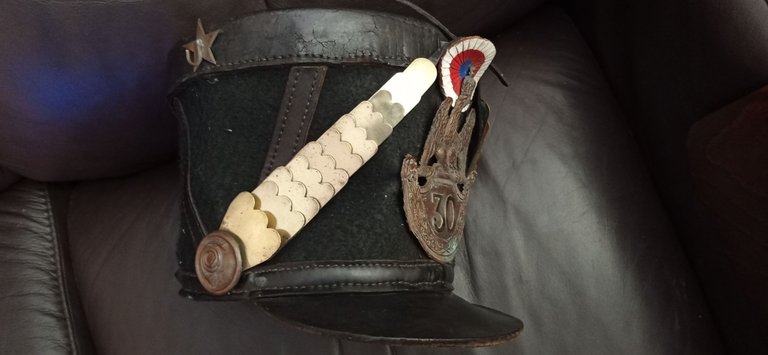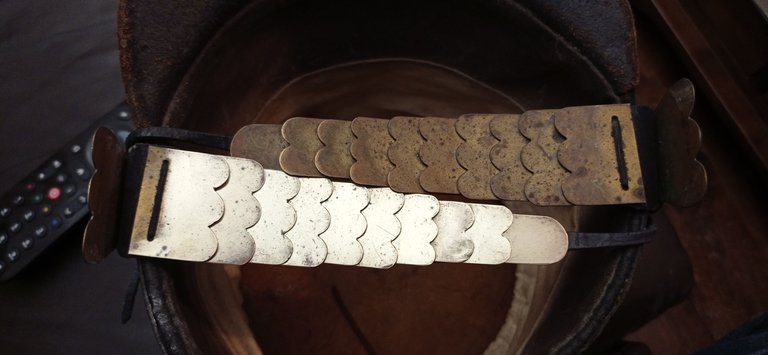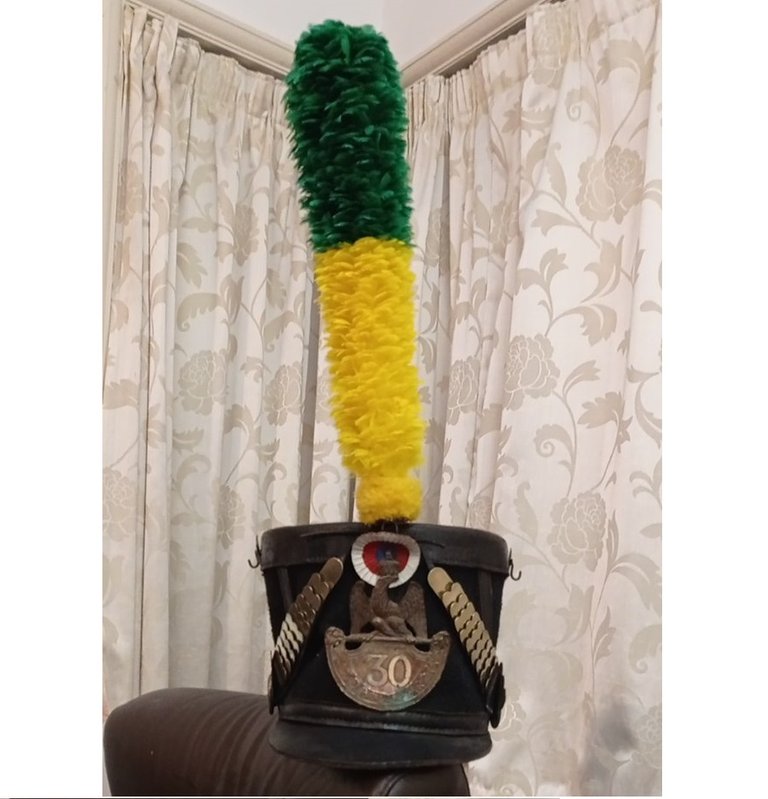An Evening Of Polishing
If you've been reading my posts, you probably know that one of my hobbies is Napoleonic re-enactment.
I took a break from it for a few years (too much real life to deal with), but returned to it this year.
While I was away, fashions changed. I know that might sound like an odd thing to say, after all I'm trying to re-create something that was going on over 200 years ago. Surely the uniforms are the uniforms, and are well known from literally thousands of illustrations.
The reality is more nuanced. Many of the illustrations are from after the time, or were painted at the time but were idealised. We try to portray the reality, or at least the reality as far as current research goes. Quite a few re-enactors spend significant amounts of time and effort digging through regimental archives, looking for records of uniforms, equipment, cloth and other items purchased or assigned to specific regiments.
The goal is to find out how well the regulations were applied, and when the colonels used unit funds to buy non-regulation items. This then feeds back into re-enactment to help us refine our impressions to make them more accurate.
One thing that has changed in the society I'm part of is the approach to uniformity and smartness. It actually mirrors something the historical French army would have gone through from 1902 to 1805.
When I originally joined, many years ago, we were working through the bicentennial years. Many of us were trying to create a "Revolutionary" look, the kind of appearance of the Army of Italy, or the army Napoleon led at Marengo. At that time, the French state was dealing with a massive expansion of the army and all the supply issues that meant. So civilian items like stripey trousers were commonly seen and the army was often dressed more like tramps than soldiers.
Later on, the Peace of Amiens (more of a brief interlude than a long-lasting peace) gave the French army the chance make and issue new equipment and generally smarten up and become more uniform. By the high Empire, this led to a thoroughly glamorous look as uniforms reached peak stylishness.
Within our society a similar change has happened. "Studied neglect" and the campaign-worn look is out of fashion. We're aiming for uniform kit, with cross-belts nicely whitened and metalwork polished.
So I spent tonight polishing the long-neglected chin scales on my shako. They'll never be 100% perfect again, because they have two jobs; helping keep my hat on, and catching burning gunpowder bits that get flung out of people's pans when we're firing volleys. The burning fragments leave permanent marks !
Below is one side after polishing for about an hour.

This shot is a bit of a "before and after" - the chin scales at the top of the photo haven't yet been polished, the ones on the bottom have.

Here's the end result - shako with shiny chin scales, and plume fitted.
The shako plate numbers have had some polishing, but the plate itself is copper with a very thin layer of brass plate; trying to polish it just removed the plating. I also haven't fitted the cords & flounders. After many years of service their fine green colour is a faded shade of muddy khaki, so they'll need re-dying.

All photos by me
That's really cool, I'm not at all part of the reenactment scene so I had no idea kits would change over time like you've described, that's really interesting!
It's a really confusing mess, a combination of constantly updating the research, whatever is fashionable right now in terms of smartness vs campaign look, and differences between the historical uniforms within a time period (the regiment I portray, the 30eme de Ligne changed details of their uniforms significantly 4 times in a 10 year time span !)
Yeesh! Lol that's crazy. I'll have to look up that regiment so I get an idea how much that look changed within that span of time. (Which might actually be useful worldbuilding understanding... Hmm, I guess I know today's prompt!)
lol, prompts come from the strangest places 😆
Yeah, the 30eme changed a lot. 1805 they were in the "standard" habit longue and bicorne, with regimental distinctions mainly limited to the regiment number on buttons, cartridge box covers etc.
In 1806, regulations called for the shako to replace the bicorne, on a 3-year issuing cycle. At the same time, voltigeurs (light companies, one per battalion) were created. The shako had a diamond-shaped plate. The regulations said voltigeurs got a chamois-coloured collar and yellow pompom on the shako as their company distinctions. But the regulations were massively ignored - they were an elite company and adopted as many of the distinctions grenadiers (the other elite company) had, but in variations of yellow/red/green instead of the pure red of grenadiers. For the 30eme, it included epaulettes in yellow and a yellow over red plume.
After the 1807 campaign, a whole bunch of regiments with a "3" in the number, including the 30eme, adopted Polish-style sunburst shako plates. The 30eme were heavily involved in the campaign, and it's possible (but uncertain) that the voltigeur companies may have switched all yellow epaulettes for yellow ones with red crescents.
In the 1809 campaign, the 30eme were again in the thick of things, and by the end their uniforms would have been shredded. So they re-equipped. This time, they adopted the new design of shako plate (a Phrygian shield with lions heads - the one I use on my shako). The voltigeurs went for green epaulettes with a yellow crescent and a yellow plume with green tip.
Then in 1812, on the eve of the Russian campaign they re-equipped again, going into the new Bardin regulation uniform, which was a bit simplified but recognised the reality of what soldiers in the field were actually doing. Voltigeurs got all yellow distinctions but were supposed to hand their sabres back in.
And believe it or not, that little essay is just a brief overview of a few key points ! 😀